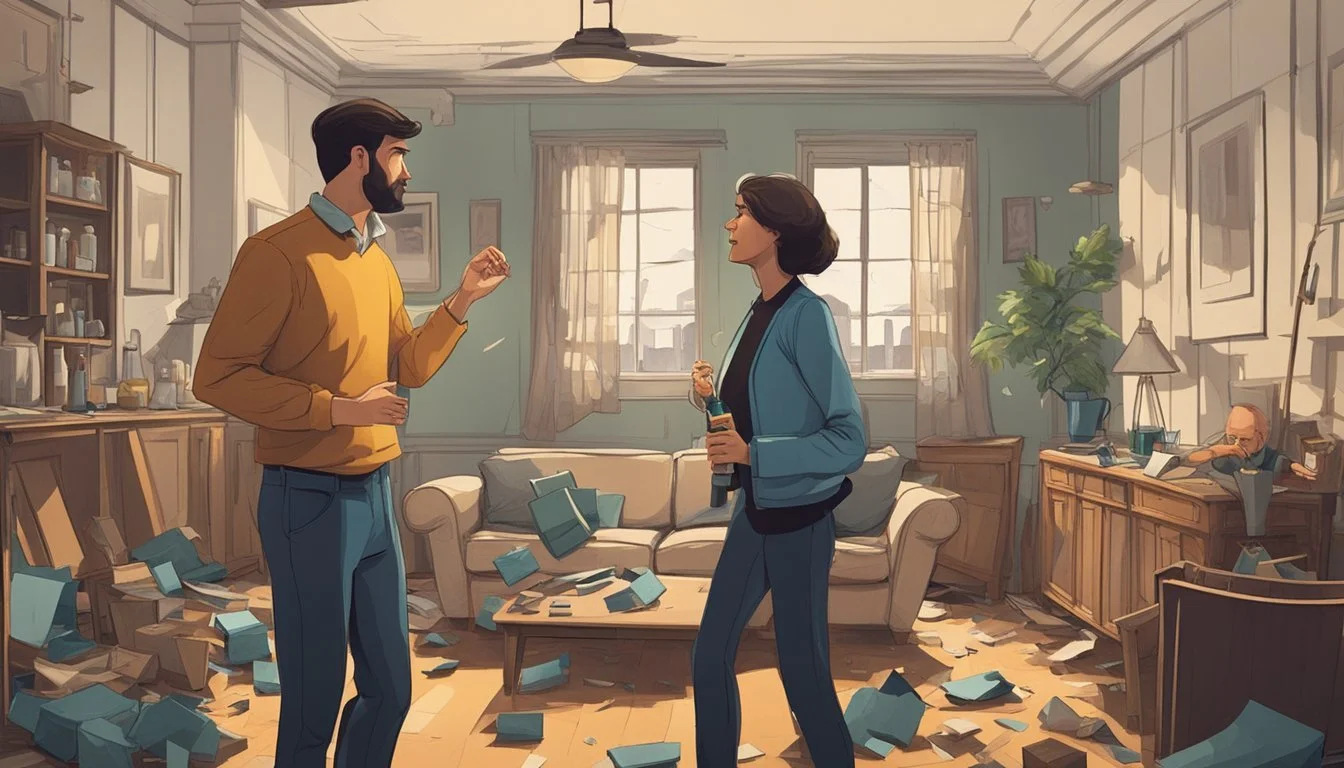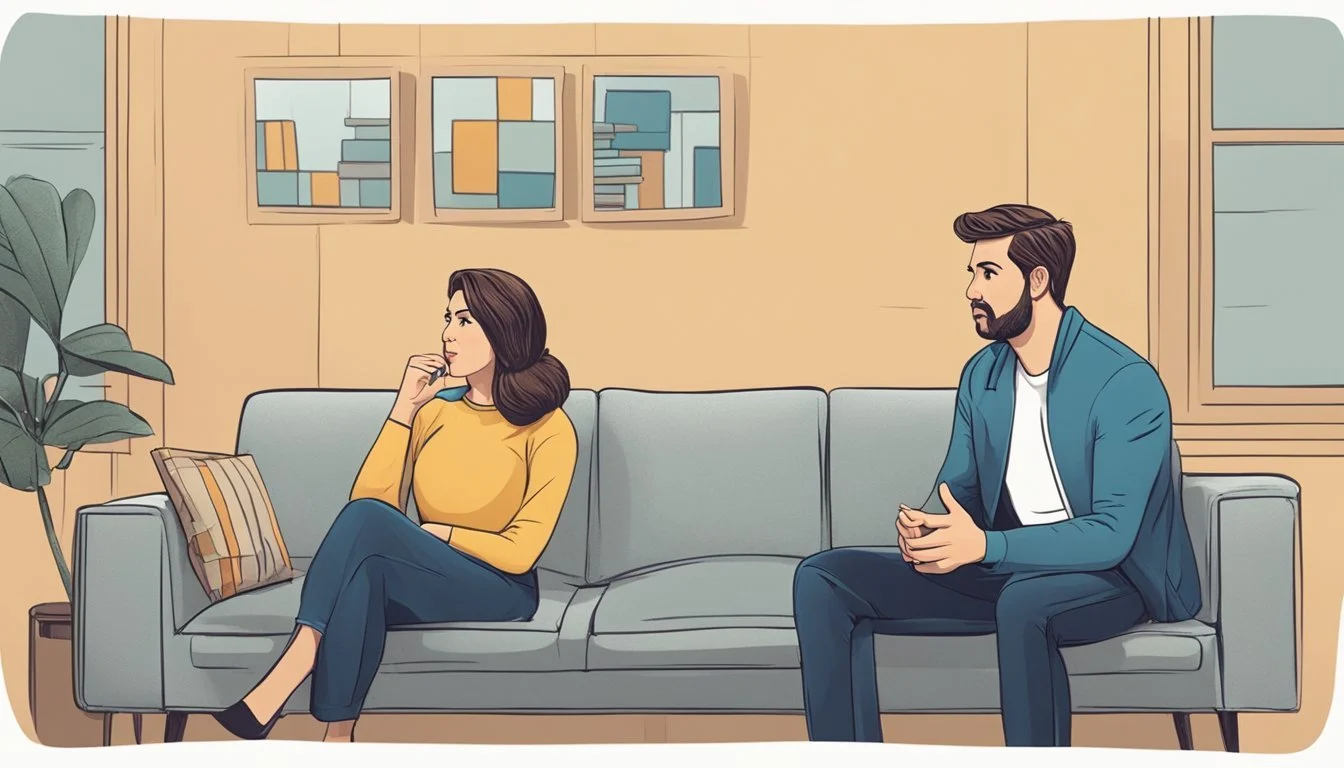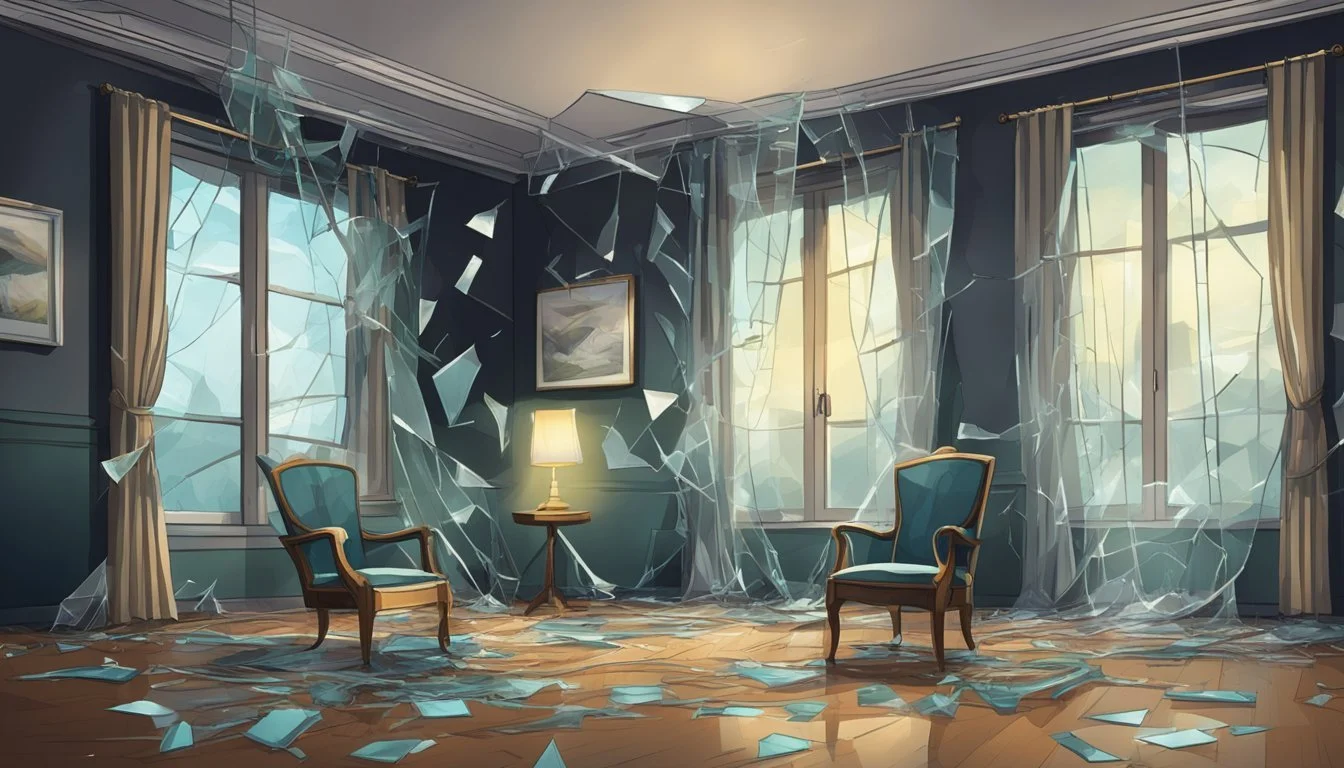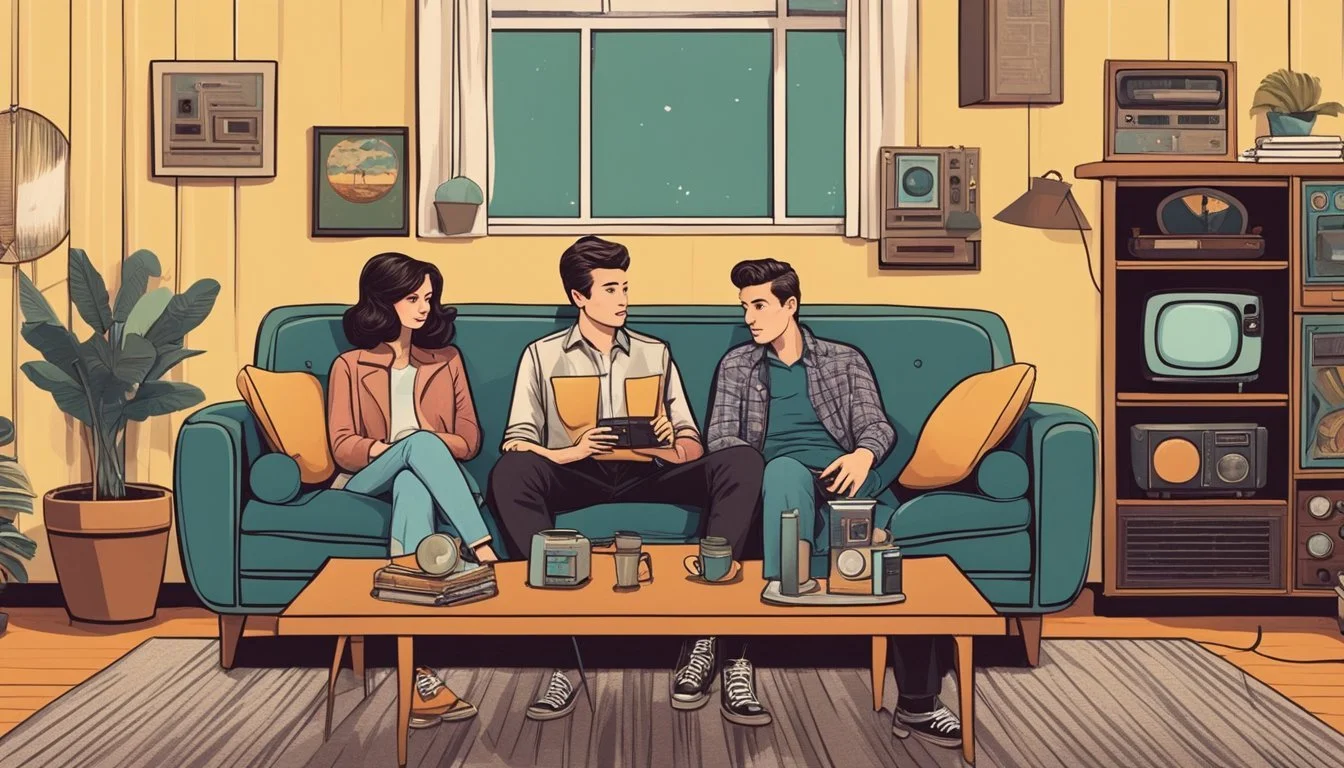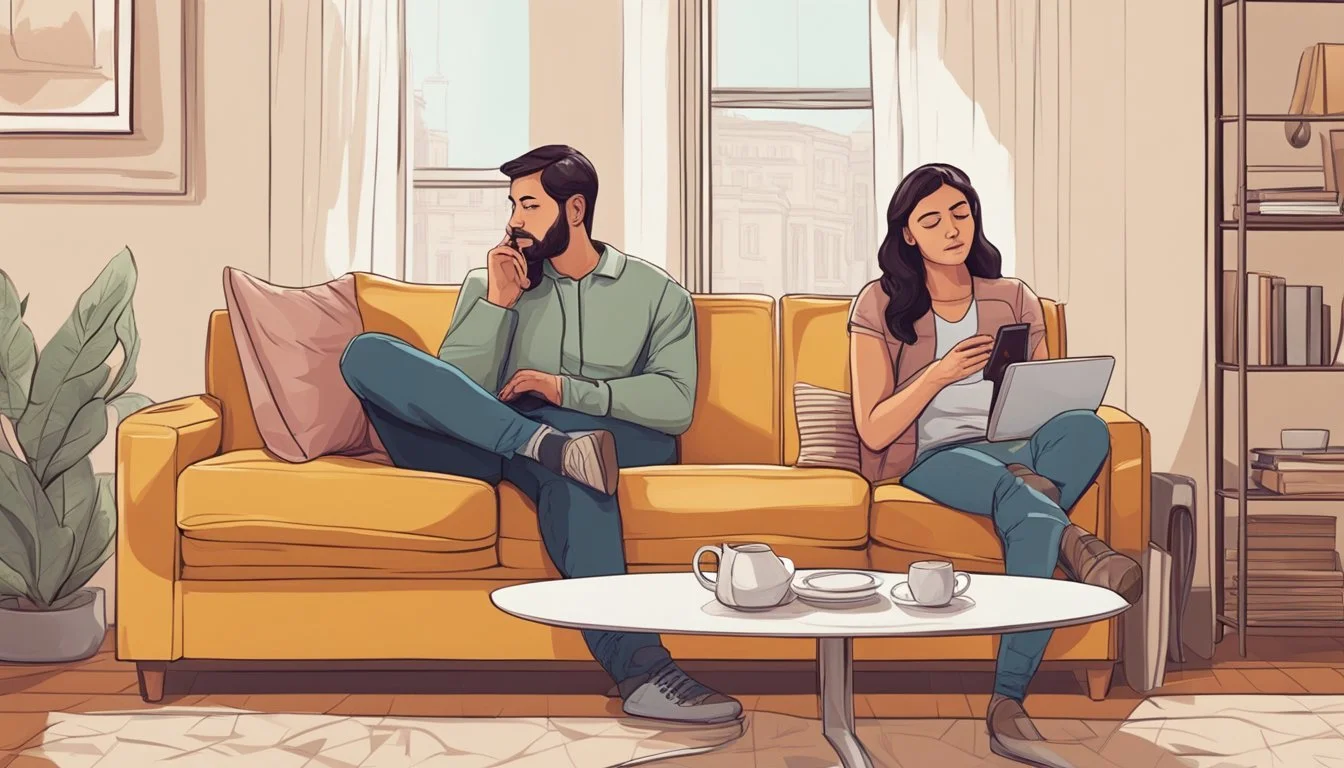Drama or Danger? Unpacking Toxic Relationship Shows on Television
Television has long captivated audiences with dramatic love stories, but not all on-screen romances set a healthy example. Many popular TV shows feature couples whose relationships are fraught with toxicity, manipulation, and dysfunction. These toxic relationships in media can shape viewers' perceptions of romance and potentially normalize unhealthy dynamics.
From classic sitcoms to modern dramas, examples of problematic TV couples abound. Shows like "Scandal" and "The Muppet Show" have portrayed relationships marked by infidelity, power imbalances, and emotional manipulation. While these storylines often aim to create compelling drama, they can blur the lines between passionate romance and destructive behavior.
Recognizing toxic relationship patterns in media is crucial for developing healthy expectations in real life. By examining these fictional couples critically, viewers can learn to differentiate between genuine relationship goals and romanticized dysfunction. This awareness empowers audiences to seek out more positive representations of love and partnership in both entertainment and their personal lives.
Understanding Toxic Relationships
Toxic relationships can be difficult to recognize and often cause significant harm to those involved. These dynamics are characterized by patterns of behavior that undermine emotional well-being and personal growth.
Defining Toxicity in Relationships
A toxic relationship involves persistent negativity and emotional damage. It typically features a lack of mutual support, respect, and healthy communication. Key elements may include:
• Constant criticism or belittling • Emotional manipulation • Controlling behavior • Lack of boundaries • Jealousy and possessiveness
These relationships often create a cycle of highs and lows, leaving individuals feeling drained and confused. Partners may experience anxiety, depression, or lowered self-esteem as a result of the toxic dynamic.
Common Red Flags and Warning Signs
Recognizing red flags early can help individuals avoid or address toxic relationships. Some warning signs include:
• Excessive jealousy or possessiveness • Frequent lying or deceit • Attempts to isolate a partner from friends and family • Verbal abuse or put-downs • Disregard for personal boundaries • Unpredictable mood swings • Gaslighting or denial of reality
It's important to note that these behaviors often escalate over time. What starts as subtle manipulation can develop into more overt forms of abuse if left unchecked.
The Impact of Media Portrayal
Media representations of relationships can significantly influence public perceptions of what constitutes normal or desirable behavior. Movies, TV shows, and books often romanticize toxic dynamics, presenting them as passionate or exciting.
This glamorization can lead to:
• Normalizing abusive behaviors • Confusing intensity with love • Downplaying the seriousness of red flags
Many popular narratives depict toxic relationships as challenges to be overcome rather than situations to avoid. This can make it harder for individuals to recognize unhealthy patterns in their own lives.
Media literacy is crucial for developing a realistic understanding of healthy relationships. Viewers should critically examine the relationship models presented in entertainment and seek out more balanced portrayals.
Infamous Toxic Couples in Television
Television often portrays relationships that captivate audiences despite their unhealthy dynamics. These couples showcase problematic behaviors, power imbalances, and emotional manipulation that serve as cautionary tales.
Aria and Ezra - Pretty Little Liars
Aria Montgomery and Ezra Fitz's relationship in Pretty Little Liars sparked controversy due to their age difference and teacher-student dynamic. Ezra, a high school teacher, pursued a romantic relationship with his underage student Aria.
This unethical pairing normalized predatory behavior and grooming. Ezra's deception about his true motives for getting close to Aria further complicated their toxic bond.
The show often romanticized their forbidden love, glossing over the inherent power imbalance and legal implications. Their relationship set a dangerous precedent for impressionable viewers.
Ross and Rachel - Friends
Ross Geller and Rachel Green's on-again, off-again relationship in Friends exemplified toxic patterns. Their dynamic was marked by jealousy, possessiveness, and poor communication.
Ross's controlling behavior, evident in his "we were on a break" justification for infidelity, highlighted his inability to respect Rachel's boundaries. Rachel's emotional manipulation, including using their child as leverage, further strained their relationship.
Their inability to move on from each other prevented personal growth and healthy relationships with others. The show's portrayal of their tumultuous romance as endgame reinforced problematic relationship ideals.
Elena and Damon - The Vampire Diaries
Elena Gilbert and Damon Salvatore's relationship in The Vampire Diaries was fraught with manipulation and violence. Damon's initial pursuit of Elena was rooted in his obsession with her doppelganger, Katherine.
Their dynamic was characterized by Damon's possessive behavior and Elena's constant forgiveness of his violent actions. The show often excused Damon's abusive tendencies as passionate love.
Elena's transition from human to vampire further complicated their relationship, blurring the lines between consent and coercion. Their toxic bond was frequently glamorized, overshadowing healthier relationship models in the series.
Spike and Buffy - Buffy the Vampire Slayer
Spike and Buffy's relationship in Buffy the Vampire Slayer evolved from enemies to lovers, but remained deeply problematic. Their dynamic was marked by violence, obsession, and power struggles.
Spike's initial pursuit of Buffy was fueled by his desire to kill her, later transforming into an unhealthy fixation. Their physical encounters often blurred the line between fighting and intimacy.
The relationship reached its toxic peak when Spike attempted to sexually assault Buffy. Despite this, the show continued to explore their complex dynamic, sometimes romanticizing their destructive connection.
The Role of Sitcoms and Dramedy
Sitcoms and dramedies often portray complex relationship dynamics through a blend of humor and drama. These shows can both reflect and shape societal views on love, friendship, and interpersonal connections.
Unhealthy Dynamics in Sitcom Relationships
Many popular sitcoms feature relationships that, upon closer examination, exhibit toxic traits. Controlling behaviors, emotional manipulation, and borderline harassment are sometimes played for laughs. Shows like "Parks and Recreation" depict volatile relationships like Ron Swanson and his ex-wife Tammy, which veer into unhealthy territory.
These portrayals can normalize problematic behaviors. Viewers may find themselves rooting for couples whose interactions are actually quite dysfunctional. The line between playful banter and genuine disrespect can become blurred in the quest for comedic moments.
Some sitcoms do address these issues head-on, using humor to highlight and critique toxic dynamics. This approach can spark important conversations about relationship health among viewers.
Examining 'The Office' Romantic Subplots
"The Office" showcases various romantic relationships throughout its run. The Jim and Pam storyline is often celebrated, but it's not without its problematic elements. Their early flirtations while Pam was engaged raise ethical questions.
Other relationships in the show, like Michael and Jan's, are more overtly dysfunctional. Their volatile dynamic is played both for laughs and dramatic tension. The show doesn't shy away from depicting the negative consequences of their toxic interactions.
Ryan and Kelly's on-again-off-again relationship is another example of unhealthy patterns. Their manipulative behavior and codependency are recurring themes. While presented comedically, their dynamic highlights real issues in modern dating.
Love and Laughter in 'Gilmore Girls'
"Gilmore Girls" blends comedy and drama in its portrayal of relationships. The central mother-daughter bond between Lorelai and Rory is generally positive, but not without its challenges. Their closeness sometimes blurs appropriate boundaries.
Romantic relationships in the show vary in health. Lorelai's relationships with Max, Christopher, and Luke each present different dynamics. Some, like her engagement to Max, highlight issues of commitment and timing. Others, like her on-off history with Christopher, show the complexities of shared history and co-parenting.
Rory's romantic entanglements also provide fodder for examining relationship health. Her affairs with Dean and Jess in particular raise questions about fidelity and emotional maturity in young relationships.
Dysfunctional Relationships in 'Gossip Girl'
"Gossip Girl" takes a more dramatic approach to portraying toxic relationships. The show's Upper East Side setting provides a backdrop for numerous unhealthy dynamics. Manipulation, power plays, and betrayal are common themes.
Chuck and Blair's relationship is particularly controversial. Their passionate but often destructive interactions are romanticized despite including elements of emotional abuse. The show's treatment of their dynamic raises questions about the line between intense love and toxicity.
Other relationships, like those involving Serena or Nate, often feature infidelity and dishonesty. The show's glamorous portrayal of these issues can potentially normalize problematic behaviors for its young audience. At the same time, it does occasionally explore the negative consequences of these actions.
Dark Themes and Relationship Dynamics
Toxic relationship shows often explore the darker aspects of human connections. These series delve into complex power dynamics, psychological manipulation, and the consequences of unhealthy bonds.
Manipulation and Control in 'You'
'You' centers on Joe Goldberg, a charming but dangerous stalker. His obsessive behavior and manipulative tactics showcase the insidious nature of toxic relationships.
Joe uses technology and social engineering to control his victims. He exploits their vulnerabilities and isolates them from support networks.
The show highlights how abusers can appear caring while engaging in emotional manipulation. It exposes the gradual erosion of boundaries and personal autonomy in toxic dynamics.
'You' also explores the lasting trauma experienced by survivors of such relationships. The series serves as a cautionary tale about the dangers of romanticizing possessive behavior.
Power and Betrayal in 'Game of Thrones'
'Game of Thrones' portrays a web of toxic relationships driven by the pursuit of power. Characters engage in manipulation, betrayal, and abuse to achieve their goals.
The show depicts various forms of relationship toxicity, from political alliances to familial bonds. Cersei Lannister's incestuous relationship with her brother Jaime exemplifies the blurred lines between love and control.
Sexual assault is a recurring theme, used as a weapon of dominance. The series explores how trauma shapes characters' motivations and actions.
'Game of Thrones' also examines the cyclical nature of abuse, with victims often becoming perpetrators. This reflects real-world patterns in toxic relationship dynamics.
Incarceration and Bonds in 'Orange Is the New Black'
'Orange Is the New Black' explores toxic relationships within the confines of a women's prison. The show depicts how power imbalances and limited choices can lead to unhealthy attachments.
Inmates form complex bonds, ranging from supportive friendships to exploitative arrangements. The series examines how the prison environment amplifies existing relationship issues.
Guard-inmate relationships in the show highlight the abuse of authority and coercion. These dynamics reflect real-world concerns about power imbalances in correctional facilities.
'Orange Is the New Black' also portrays the impact of incarceration on outside relationships. It shows how separation and limited communication can strain even healthy bonds.
Love and Nostalgia in Classic TV Shows
Classic television shows have left an indelible mark on pop culture, shaping perceptions of love and relationships. These iconic programs often featured memorable couples that captivated audiences, despite sometimes portraying problematic dynamics.
Romantic Tropes in 'I Love Lucy'
'I Love Lucy' established many romantic comedy tropes still used today. Lucy and Ricky Ricardo's relationship showcased both loving moments and comedic conflicts. Their dynamic often centered on Lucy's schemes and Ricky's exasperation, played for laughs.
The show portrayed traditional 1950s gender roles, with Ricky as the breadwinner and Lucy as the housewife. Despite this, Lucy frequently rebelled against these norms, pursuing her own ambitions.
Their arguments usually resolved quickly, reinforcing the idea that love conquers all. This pattern set a precedent for many sitcom couples that followed.
The Whirlwind Romances of 'The Muppet Show'
'The Muppet Show' featured several romantic pairings, most notably Miss Piggy and Kermit the Frog. Their relationship was characterized by Miss Piggy's passionate pursuit and Kermit's reluctance.
Miss Piggy's aggressive advances and Kermit's attempts to escape created a dynamic that was both humorous and problematic. The show often played this for laughs, normalizing behavior that would be considered harassment in real life.
Their on-again, off-again status kept audiences engaged for decades. The pair's 2015 breakup highlighted the evolving perspectives on relationships in media.
The Supernatural Bonds in 'Supernatural'
'Supernatural' focused primarily on familial love between the Winchester brothers, but also explored romantic relationships. The show's long-running nature allowed for complex character development and evolving dynamics.
Romantic relationships in 'Supernatural' often faced supernatural obstacles. Characters struggled to balance their dangerous lifestyle with personal connections.
The series portrayed various types of bonds, from fleeting romances to deep, lasting connections. It emphasized the idea that love can transcend even the most extraordinary circumstances.
Modern Relationships and Their Complexities
Television shows offer a revealing lens into the evolving nature of romantic connections. They highlight changing social norms and expectations in relationships.
The Evolution of Teen Romances in 'Teen Wolf'
'Teen Wolf' portrays supernatural elements alongside complex teen relationships. The show depicts young love amid heightened stakes and dangerous situations.
Scott and Allison's relationship faces unique challenges due to their conflicting supernatural backgrounds. This dynamic explores trust issues and the struggle to maintain a relationship despite external pressures.
Stiles and Lydia's slow-burn romance showcases personal growth and the importance of friendship as a foundation for love. Their journey from acquaintances to partners illustrates the complexities of teen emotions and self-discovery.
The series also touches on LGBTQ+ relationships, reflecting modern inclusivity in teen-focused media.
The Iconic Will-They-Won't-They in 'Friends'
'Friends' popularized the "will-they-won't-they" trope with Ross and Rachel's relationship. Their on-again-off-again dynamic kept viewers engaged for a decade.
The show explores how past experiences and personal insecurities can impact romantic connections. Ross's failed marriages and Rachel's journey to independence add depth to their storyline.
Their relationship highlights the challenges of maintaining a romance while balancing career aspirations and individual growth. The series portrays the complexities of transitioning from friendship to romance and back again.
'Friends' also examines the impact of timing on relationships, showing how external factors can influence romantic outcomes.
Conclusion
Toxic relationship shows shed light on unhealthy dynamics that can damage mental health. These programs raise awareness about red flags and manipulative behaviors. Viewers learn to recognize warning signs in their own relationships.
Many shows emphasize the importance of setting boundaries and prioritizing self-care. They demonstrate how toxic patterns can escalate over time if left unchecked. Experts often provide advice on breaking free from harmful situations.
While some critics argue these shows sensationalize toxicity, others praise them for starting important conversations. The BuzzFeed community frequently discusses and analyzes popular toxic relationship content.
Ultimately, these programs encourage viewers to reflect on their own relationship goals. They highlight the value of mutual respect, trust, and open communication. By showcasing both negative and positive examples, toxic relationship shows can inspire healthier connections.


